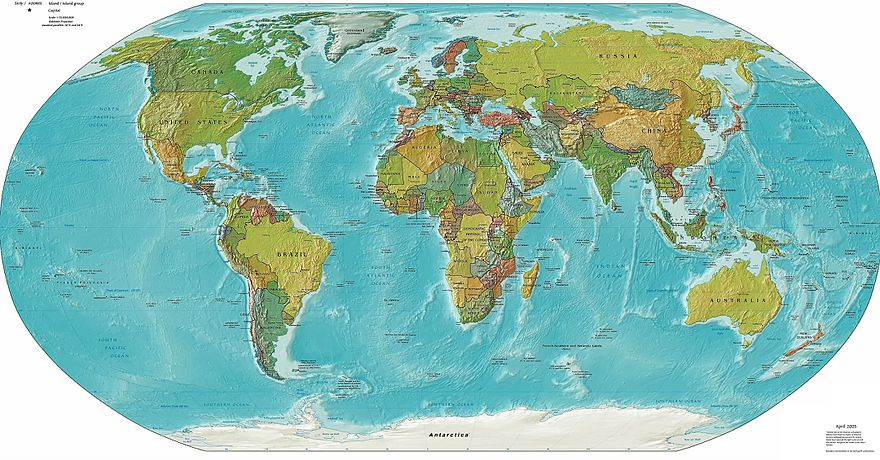Germany — the country where I come from — has a population density of about 232/km². There are some less densely populated areas, but the government has planned to get basically full coverage for cell phone networks. This also includes 5G. This means less and less freedom to do basic things like buying groceries or going to a doctor. People with EHS are not recognized at all — quite to opposite — the Federal Office for Radiation Protection (BfS) and the ICNIRP in Munich (same building, same secretary) are not taking independent studies serious. I’m afraid that it isn’t that much different in other countries. The money is still more important than the health of the citizens. So the question is what should we look for in a country and an area to be suitable for people with EHS. I’m getting more an more pessimistic regarding Germany so I checked all countries with a set of criteria.
Criteria
I sorted all countries in the world by population density and ignored those with a higher density than Germany. Then I looked at a set of criteria like political system, political stability, press freedom:
- Population density lower than of Germany
- There are 150 states remaining
- Security / political stability
- Most of the continent of Africa not suited
- States like Venezuela, Middle East (Syria, Irak,…) not suited
- Political system (authoritarian governments, dictatorships)
- e.g. China, North Korea, Turkey not suited
- Press freedom
- e.g. Russia, Turkey, Russia not suited
- The more forest areas the better
- Climate not too cold, so that growing own food is possible
- Obstacles regarding immigration (difficult for example in the USA)
- Travel (For someone in Germany New Zealand is a long journey)
Which countries remain?
The following countries remained in my list after I checked the above points:
| Land | Population density (people/ km²) Germany: 226 |
Advantages 👍 |
Disadvantages👎 |
| > Europe | |||
| Hungary | 106 | close to Germany; Real estate prices | Language difficult to learn |
| Romania | 91 | close to Germany; Real estate prices | Language difficult to learn |
| Sweden | 22 | close to Germany; Very low population density | Climate; Language difficult to learn; Less and less cache payment possible |
| Norway | 16 | close to Germany; Very low population density | Climate; Language difficult to learn; Expensive (similar to Switzerland) |
| Finland | 16 | close to Germany; Very low population density | Climate; Language difficult to learn |
| > North/South America | |||
| Canada | 3,5 | Very low population density; Language | Climate; Travel by plane |
| Ecuador | 61 | Climate | Travel by plane |
| Peru | 24 | Very low population density; Real estate prices; Climate; Landscape | Travel by plane |
| Bolivia | 10 | Very low population density; Real estate prices; Climate | Travel by plane; Political stability |
| Paraguay | 17 | Very low population density; Real estate prices; Climate | Travel by plane; climate (to hot for some); Many forest areas have been cleared |
| Argentina | 16 | Very low population density | Travel by plane; glyphosate issue (Monsanto); Monetary crisis |
| Uruguay | 19 | Very low population density; Climate | Travel by plane |
| Chile | 23 | Very low population density; Climate | Travel by plane |
| Costa Rica | 94 | Climate; Landscape; Political stability; Many nature reserves | Travel by plane; High population density in comparison to countries in South America |
| Belize | 15 | Very low population density; Language (English) | Travel by plane |
| > Other countries |
|||
| New Zealand | 17 | Very low population density; Climate; Language (English) | Long travel by plane |
For every country there are some disadvantages. New Zealand, Canada, and South America (Peru, Ecuador, Paraguay, e.g.) might be interesting. If you also have been looking at different countries or are interested in the project, let me know.
Source for population density: Wikipedia

